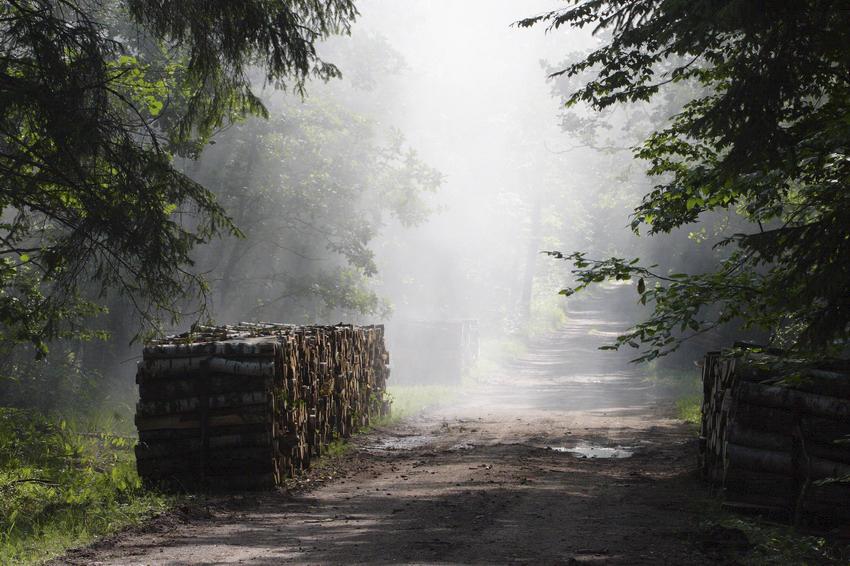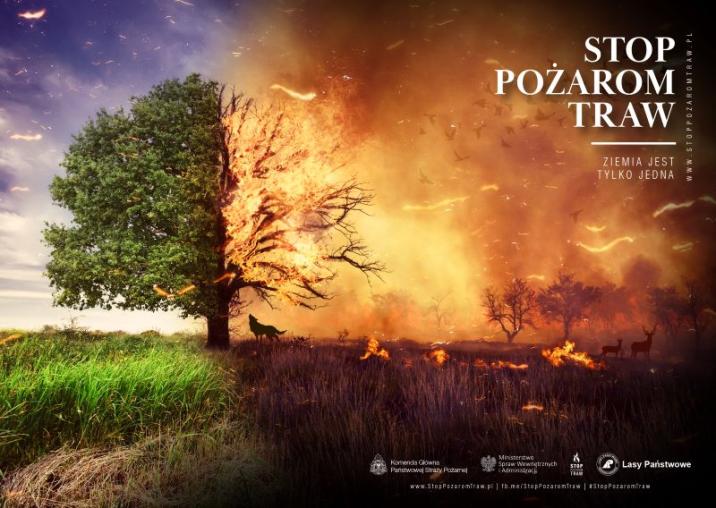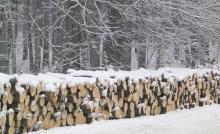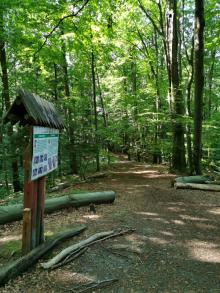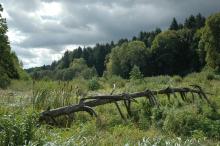 Asset Publisher
Asset Publisher
The State Forests National Forest Holding
The State Forests National Forest Holding is the largest organisation in the European Union managing forests, which belong to the State Treasury and celebrating its 90 anniversary this year.
Presently, we manage the area of one third of Poland's territory. Not long after the end of the Second World War, there was only 21 % of the area. Every year we plant 500 million of new trees, as we want Polish forests grow all the time.
Every year Polish foresters plant 500 million of trees.
85 % of nature reserves in Poland are located within the State Forests. 40 % of the forests managed by General Directorate of the State Forests are protected within the framework of European network Natura 2000. We fight against many threats: natural disasters, plaques of insects, trees' diseases, fires, pollutions, as well as poaching and vandalism.
We take care the forestry supplying the market with timber, as ecological and universal material, to be carried on in accordance with rules of balanced development (photography P.Fabjański).
One of our major tasks is making forests accessible to the society. We invite you to take advantage of these beautifully located within the forest wilderness holiday resorts, forester's lodges or guest rooms. That is for you, we create thousand kilometres of hiking trails, cycling paths or camping sites. All the above mentioned, you can find in service www.czaswlas.pl.
We also take care the forestry supplying the market with timber, as ecological and universal material, to be carried on in accordance with rules of balanced development. We obtain over 30 million of cubic meters of wood annually, twice as much as at the beginning of the nineties of the XX century.
Despite of this, the average of wood abundance per hectare of our forests is one fourth bigger than 20 years ago and 40% bigger than the average of European Union currently amounts.
In Poland in sectors connected with the forestry, there work about 375 thousand of people. It means that each 40 working Pole works in the forest.
In Poland in sectors connected with the forestry, there work about 375 thousand of people. It means that each 40 working Pole works in the forest. The sector of wood processing works out approximately 8 % of our GDP (Gross Domestic Product). Among others, thanks to the timber from the State Forests Poland is the 10 largest producer of furniture in the world, and the 4 largest furniture exporter.
The State Forests employ 25 thousand people. That way we are the 9 biggest employer in Poland. Among the largest companies in our country it takes 22 place in respect of its incomes and 11 place in respect of its profits. The value of assets, we manage, reaches 300 million zl. If we add social values, it will be worth one billion zlotych. We do not use money from the budget, but we earn money on our own to support the business. In spite of the financial crisis, since 2002, we continuously note down profits. Moreover, we pay taxes amounting 1,3 billion zl annually.
87 % of Poles think, the foresters are competent. We willingly share our knowledge of Polish forests, of their history and of nature values with the others. We publish books, periodicals, brochures; we also administer the website www.lasy.gov.pl . For children, the youth and teachers, we prepared internet service "E-lynx' Lynx Forest" (www.erys.pl). Our staff has supported schools in field of nature education for years. We also organise many actions to let people broaden their knowledge about forest, nature and ecology.
 Asset Publisher
Asset Publisher
Nie igraj z ogniem
Nie igraj z ogniem
Wystartowała kampania społeczna „Stop pożarom traw”
Kampania Państwowej Straży Pożarnej rozpoczęła się 1 marca i będzie trwała do 30 kwietnia 2024 r. Jej celem jest zwiększenie świadomości i wiedzy społeczeństwa na temat negatywnych skutków wypalania traw i nieużytków oraz zmiana myślenia i postaw wobec tego szkodliwego działania. Od lat wysiłki strażaków na rzecz zapobiegania pożarom łąk, nieużytków, a w konsekwencji często również lasów wspierają leśnicy ściśle współpracując ze Strażą Pożarną na rzecz ochrony środowiska przed pożarami.
O tym, że wypalanie, to wciąż duży problem społeczny świadczy ilość zdarzeń. W 2023 roku w Polsce strażacy interweniowali 21 206 razy przy pożarach traw i nieużytków rolnych. Na przełomie zimy i wiosny oraz przedwiośnia wyraźnie wzrasta liczba pożarów łąk i nieużytków. Wypalane są trawy i nieużytki rolne, co usprawiedliwiane jest tłumaczeniem, że takie działanie użyźni glebę. Od pokoleń wśród wielu ludzi panuje bowiem przekonanie, że spalenie trawy spowoduje szybszy i bujniejszy jej odrost, a tym samym przyniesie korzyści ekonomiczne. To jednak błędne myślenie.
Pożary traw powodują spustoszenie dla flory i fauny. Płoną nie tylko rośliny, ale i zwierzęta: jeże, lisy, zające schowane w bruździe, płazy, gady, nawet bażanty, kuropatwy, sarny, dziki, które w tym czasie przebywały na powierzchni i nie znalazły drogi ucieczki. Płomienie bezpowrotnie niszczą ich miejsca bytowania, miejsca lęgowe ptaków gnieżdżących się na ziemi i w krzewach. Palą się również gniazda już zasiedlone. Dym uniemożliwia pszczołom, trzmielom i innym zapylaczom oblatywanie łąk. Ogień uśmierca wiele pożytecznych zwierząt bezkręgowych, m.in. dżdżownice, które mają pozytywny wpływ na strukturę gleby i jej właściwości, pająki, wije, owady, ślimaki. Ogień z łąk przenosi się na pobliskie lasy. Młode drzewka są niszczone, a starsze drzewostany poważnie uszkadzane. Każdego roku dochodzi do kilkunastu tego typu pożarów.
To tylko kilka przykładów negatywnych skutków wypalania traw dla przyrody. W pożarach nieużytków niejednokrotnie giną także ludzie. W 2023 były to 3 ofiary śmiertelne oraz 36 rannych. Pożary niosą straty i koszty, które można wyliczyć. Strażacy oszacowali, że w 2023 roku poniesione straty wyniosły niemal 69 mln zł. Natomiast podczas akcji ratowniczych związanych z gaszeniem nieużytków zużyto 58 629 431 l wody. Ponadto, wypalanie pociąga za sobą konsekwencje prawne. Należy pamiętać i podkreślać, że wypalanie traw jest zabronione! Grożą za to wysokie kary, nawet do 30 tys. zł, a w przypadkach, kiedy zagrożone jest mienie lub życie – od 1 roku do 10 lat pozbawienia wolności.
Więcej informacji o całej kampanii społecznej „Stop pożarom traw”, dostępne jest na stronie Komendy Głównej PSP pod linkiem Kampania Stop Pożarom Traw - Komenda Główna Państwowej Straży Pożarnej - Portal Gov.pl
Zapraszamy do obejrzenia spotu promującego tegoroczną edycję kampanii społecznej „Stop pożarom traw”


 fot. Paweł Fabijański
fot. Paweł Fabijański
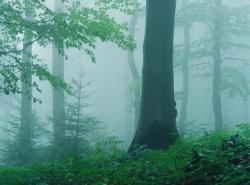 fot. Paweł Fabijański
fot. Paweł Fabijański
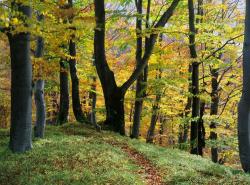 fot. Paweł Fabijański
fot. Paweł Fabijański
